SJB is well versed in designing residential architecture and, while Ashbury Terraces might be a relatively small project in relation to Sydney as a whole, it provokes some fundamental questions about the future of Australian cities.

March 28th, 2023
Larger than a lightless inner-city unit, smaller than a sprawling detached suburban bungalow; part of the surrounding community fabric, yet a point of difference in relation to the local built environment. Somewhere amidst this thicket of architectural complexity, urban planning bureaucracy and public controversy there might just be a sweet spot hinting at a more desirable and sustainable future in the residential life of a modern city.
Ashbury Terraces, a hybrid project developed by Coronation Property and designed by SJB, is set to bring contemporary terraces and unit blocks to a suburb of almost exclusively detached houses. It hints at a solution, but what then is the problem? Questions of justice relating to housing supply and market inequality, of sustainability implied by the car-centred city, and of desire and aesthetics concerning the deadening suburban sprawl of that city. In short, it is a question of urban futures.

“Ashbury Terraces is about whether you can get some density – some good density, density done well – in a suburb and on a piece of land that was never really designed for anything in particular,” says Adam Haddow, director at SJB.
“I think we’ll solve some of our housing problems by doing projects like this because it’s just not possible that entire suburbs will be rezoned in Australia, so we have to eke out these little ‘lazy’ pieces of land and make them work better for us.”
Supply is of course part of the problem, but the approach to housing must be qualitative as well as quantitative. Simply building more apartment blocks and expanding the suburbs further will not create a more functional or sustainable city.
Related: The Sydney School and the ‘bandit fringe’

Residents in low-density, established residential areas have understandable concerns relating to the alien, high-rise blocks being planted with little consideration of surroundings. And a city such as Sydney can rightfully feel anxious about the emergence of ever more monochromatic, homogeneous areas filled with anonymous towers of units.
To conflate poorly designed density with urban density as a whole, however, would be a mistake: “More is not more,” as Haddow succinctly puts it. “The housing supply in the outer suburbs might be the cheapest place for a person to buy, but that doesn’t mean that it’s the cheapest for society.”

The underlying theme tying this philosophy together is diversity, the idea that what makes for a rich and desirable urban fabric is a mixture of uses and typologies. The terrace house, interpreted for the contemporary world, forms one part of this picture – it just so happens to be a rather important part, given the opportunities to design it in ways that mediate the convenience and community of units with the independence of houses.
Haddow refers to Paddington as an example of diversity in the built environment: “The good thing about Paddington is that you see the layers of time – from turn-of-the-century terraces and the manor houses that preceded them to mid-century six-pack apartments and contemporary houses,” says Haddow.

“If you look there or in a place such as Fitzroy in Melbourne, you can see that level of diversity. Contrary to that, we get suburbs that are all the same. If you want to write a beautiful poem, you have to understand language, intonation and so on; a terrace house is just one part of the language of good cities.”
Perhaps one day we will look back on Ashbury, around 10km from the city centre, and read a similarly rich layering of urban history. Ashbury Terraces is a hybrid project combining contemporary terraces with apartments and due for completion at the end of 2024, marks a step in the direction of plotting a missing middle-density solution to the multiple crises of housing in the city.
SJB
sjb.com.au
Coronation Property
coronation.com.au
Photography
Various (including renders courtesy of SJB)





We think you might like this story on SJB’s work on 52 Reservoir Street.
INDESIGN is on instagram
Follow @indesignlive
A searchable and comprehensive guide for specifying leading products and their suppliers
Keep up to date with the latest and greatest from our industry BFF's!

Gaggenau’s understated appliance fuses a carefully calibrated aesthetic of deliberate subtraction with an intuitive dynamism of culinary fluidity, unveiling a delightfully unrestricted spectrum of high-performing creativity.

For Aidan Mawhinney, the secret ingredient to Living Edge’s success “comes down to people, product and place.” As the brand celebrates a significant 25-year milestone, it’s that commitment to authentic, sustainable design – and the people behind it all – that continues to anchor its legacy.
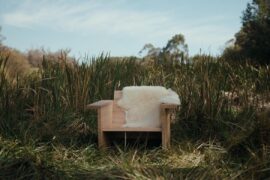
Mark Tuckey X Main Studio embrace the future with a new range of furniture that showcases the beauty of agroforestry timber.
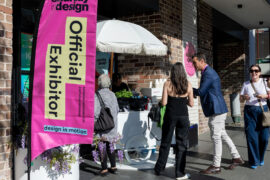
Collingwood is one of three precincts at Saturday Indesign 2025 on 6th September – find out what’s on there!
The internet never sleeps! Here's the stuff you might have missed
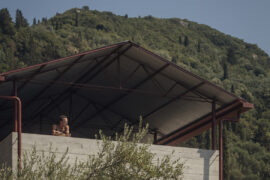
Dr Piers Taylor – award-winning British architect, BBC presenter and founder of Invisible Studio – returns to Australia to deliver a keynote at the inaugural Glenn Murcutt Symposium.
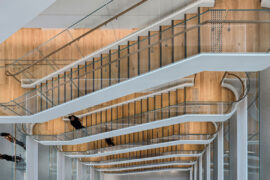
Brad Krauskopf, CEO & Founder of Hub Australia, tells us about Hassell’s design for Hub Australia Martin Place.
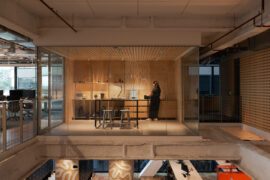
The Arup Workplace in Perth/Boorloo, designed by Hames Sharley with Arup and Peter Farmer Designs, has been awarded The Work Space at the INDE.Awards 2025. Recognised for its regenerative design, cultural authenticity, and commitment to sustainability, the project sets a new benchmark for workplace architecture in the Indo–Pacific region.